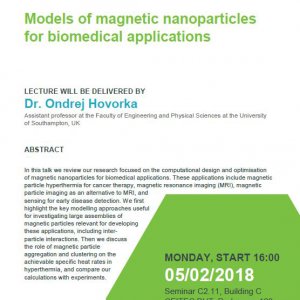Bio: I studied for my B.Sc. (Psychology) and M.Sc. (Psychological Research Methods) degrees at University of Nottingham, where I also completed my Ph.D. under the supervision of Prof. Tomáš Paus. I am now a post-doctoral researcher at CEITEC (Masaryk University), but during my time here I have also worked at the Laboratory of Action and Body (Royal Holloway University of London).
Research Interests: As a cognitive neuroscientist I am interested in the brain mechanisms and networks underlying all cognitive domains, but my research has focused primarily on social cognition. For my Ph.D. I applied sophisticated analytical techniques to functional neuroimaging data to investigate the development of the action-observation network – a brain system implicated in various socio-cognitive capacities. During my postdoctoral career I have developed these techniques for the analysis of both functional and structural neuroimaging data, and conducted neurophysiological experiments that together allow for the multi-level investigation of social brain networks. Currently I am developing experimental paradigms for hyperscanning studies. This will allow me to investigate the neural dynamics underlying socio-cognitive behaviours (e.g., imitative tendencies, empathic expression, self-other distinction) as they unfold during real social interactions.
Hyperscanning research
Social neuroscience aims to elucidate the neural basis of social behaviour. Historically, this has involved the measurement of individuals’ brain responses while they process and react to social stimuli. Social behaviour is not a unidirectional process, however; we do not just react to our social environment, we interact with it. Social interactions are characterised by the reciprocal exchange of social information among interactants, demanding mutual co-adaptation and resulting in dynamic behavioural displays. Understanding the brain mechanisms that allow for such adaptive behaviour requires neuroscientific techniques capable of measuring brain processes during real inter-personal social behaviour. This can be achieved with “hyperscanning” - the measurement of brain activity from two or more individuals simultaneously whilst they interact with one another.
My team is developing experimental paradigms that can delineate among different aspects of inter-personal behaviour. By incorporating these paradigms into dual-fMRI and dual-EEG experiments, we will investigate brain dynamics as they unfold during different forms of social interaction. This will help us to identify effective neuromarkers for the quality of social communication, affording the assessment of social dimensions along which psychiatric illnesses can be described. The methodological development of hyperscanning might also lead to its application as a tool for the objective, neurobehavioural evaluation of behavioural intervention programs.
Bio: I studied for my B.Sc. (Psychology) and M.Sc. (Psychological Research Methods) degrees at University of Nottingham, where I also completed my Ph.D. under the supervision of Prof. Tomáš Paus. I am now a post-doctoral researcher at CEITEC (Masaryk University), but during my time here I have also worked at the Laboratory of Action and Body (Royal Holloway University of London).
Research Interests: As a cognitive neuroscientist I am interested in the brain mechanisms and networks underlying all cognitive domains, but my research has focused primarily on social cognition. For my Ph.D. I applied sophisticated analytical techniques to functional neuroimaging data to investigate the development of the action-observation network – a brain system implicated in various socio-cognitive capacities. During my postdoctoral career I have developed these techniques for the analysis of both functional and structural neuroimaging data, and conducted neurophysiological experiments that together allow for the multi-level investigation of social brain networks. Currently I am developing experimental paradigms for hyperscanning studies. This will allow me to investigate the neural dynamics underlying socio-cognitive behaviours (e.g., imitative tendencies, empathic expression, self-other distinction) as they unfold during real social interactions.
Hyperscanning research
Social neuroscience aims to elucidate the neural basis of social behaviour. Historically, this has involved the measurement of individuals’ brain responses while they process and react to social stimuli. Social behaviour is not a unidirectional process, however; we do not just react to our social environment, we interact with it. Social interactions are characterised by the reciprocal exchange of social information among interactants, demanding mutual co-adaptation and resulting in dynamic behavioural displays. Understanding the brain mechanisms that allow for such adaptive behaviour requires neuroscientific techniques capable of measuring brain processes during real inter-personal social behaviour. This can be achieved with “hyperscanning” - the measurement of brain activity from two or more individuals simultaneously whilst they interact with one another.
My team is developing experimental paradigms that can delineate among different aspects of inter-personal behaviour. By incorporating these paradigms into dual-fMRI and dual-EEG experiments, we will investigate brain dynamics as they unfold during different forms of social interaction. This will help us to identify effective neuromarkers for the quality of social communication, affording the assessment of social dimensions along which psychiatric illnesses can be described. The methodological development of hyperscanning might also lead to its application as a tool for the objective, neurobehavioural evaluation of behavioural intervention programs.








